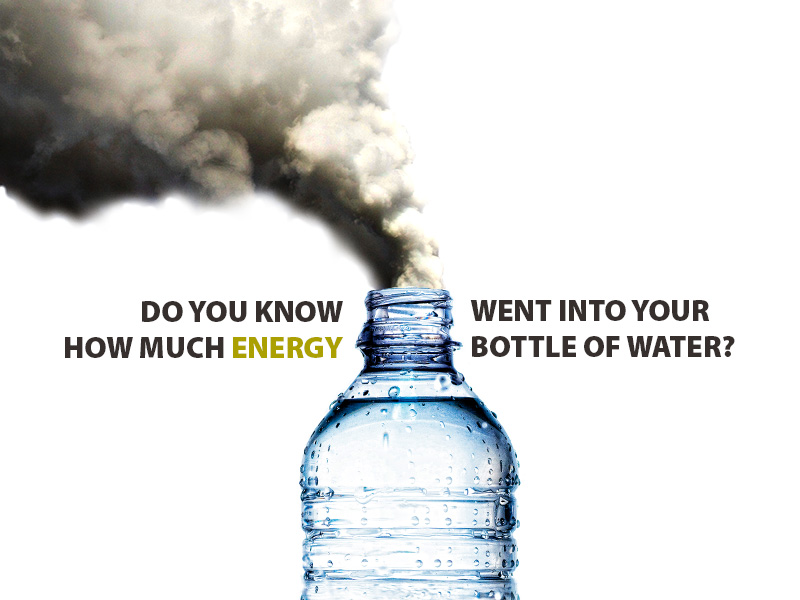Living Lab Energy Conservation Highlight - The Hidden Cost of Bottled Water
As part of our series of Living Lab highlights for Energy Conservation Month, today we'll look at a student project that sought to quantify the hidden embedded energy costs of bottled water.
By Matt WolsfeldLiving Lab: The Hidden Cost of Bottled Water
A geography student takes a hard look at what we're missing when we buy bottled water.
Though water conservation and energy conservation are often looked at as entirely different processes, the truth is that the two are inherently linked to each other. Water relies on energy for many services including transportation, treatment, and cooling. A push towards water conservation often results in a corresponding decrease in energy consumption, which even further increases the incentive to save water whenever possible.
This linkage, though often overlooked, can also be made apparent when we look at the difference in our drinking water sources. Arguments against plastic water bottles often circle around the waste generated at their end of life; however, the embedded energy found in the production, treatment, and transportation processes of plastic water bottles account for a large portion of their environmental impact.

In 2012, Melissa Brause worked with the Office of Sustainability for a Living Lab project associated with her Geography 398 class that focused on this issue. Melissa looked at the embedded energy that was associated with the bottled water available on campus and compared it to that associated with municipal tap water from the City of Saskatoon. Her results showed three main differences in the energy consumption of bottled water vs. tap water:
- Bottling – Bottled water requires the production of PET plastic bottles, which can use as much as 2.8 MJ of energy per bottle depending on processes and materials. Municipal tap water does not require bottling and completely avoids this use of energy.
- Transportation – Transporting raw materials to bottled water facilities, bottling the water, and transporting the final product to its destination in Saskatoon consumes massive amounts of energy. Numbers can vary greatly depending on the mode of transport used, but the energy required can range from 1.4 to 5.8 MJ per litre of water. Municipal tap water on the other hand only requires energy to pump water through its system, a negligible amount compared to the long distance transport required for bottled water.
- Treatment – Municipal tap water undergoes a physical treatment process to remove large particles, filtration for fine particles, and disinfection through the use of chloramines. The end result is safe and clean drinking water with minor energy use. Cold beverage industries prefer to use very energy intensive processes such as UV radiation, ozonation, and reverse osmosis in addition to a multitude of other steps. These processes result in energy consumption more than 6 times that of municipal treatment methods.
Melissa’s conclusions showed that the embedded energy of bottled water sold at the University of Saskatchewan can range from 3.4 to 4.0 MJ per litre, while municipal tap water weighs in at a mere 0.003 MJ per litre. Using these values, it can be said that drinking bottled water on campus consumes as much as 1300 times the energy required to drink a comparable amount of tap water. The sustainable decision is clear: tap water is the way to go.
As Energy Conservation Month comes to a close this week, we should take time to remember that almost all of our day-to-day activities require some sort of energy input. Whether it is stopping to buy a bottle of water, forgetting to turn out lights out as we leave the office, or choosing to operate a space heater because a room feels cold, our decisions can carry a big impact on the energy usage of the university. As we acknowledge the university’s Energy and Water Conservation Policy and move forward with the Campus Sustainability Plan, we should stop and evaluate how we can make a change in our lives to help reduce energy use on campus.
